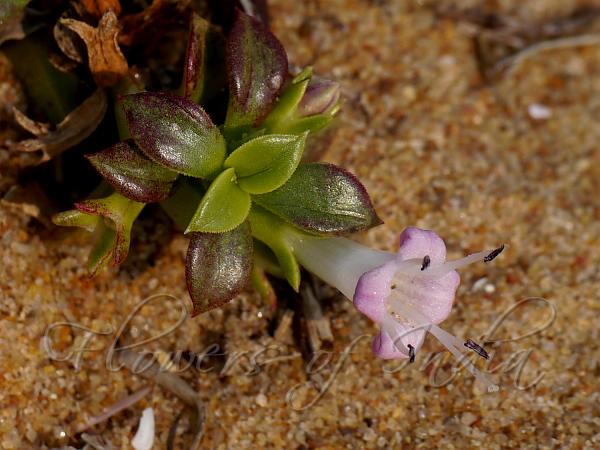|
| East-Indian Water-Bluet |
|

|

| File size | 450394 |
| Original date | 1/21/19 10:02 PM |
| Resolution | 1500 x 1125 |
| Flash | Flash did not fire, auto |
| Focal length | 45.0mm |
| Exposure time | 1/2000s |
| Aperture | 4.5 |
| Focus Distance | |
| Metering Mode | Spot |
| Camera make | Panasonic |
| Camera model | DMC-G3 |
| Sensor type | OneChipColorArea |
|
|
|
|
Photo: |
Botanical name: Hydrophylax maritima Family: Rubiaceae (Coffee family)
Synonyms: Diodia orientalis, Sarissus anceps
Synonyms: Diodia orientalis, Sarissus anceps
East-Indian Water-Bluet is a succulent prostrate
creeping herb with stems, mostly covered by sand, up to several meters
long. Rising up flowering shoots often not more than 10 cm long. Leaves
are nearly stalkless, blades narrowly elliptic-oblong or spoon-shaped
1.0-2.5 cm long, 5-8 mm broad, tip pointed, hairless. Flowers are
white, tube 6-7 mm long, petals triangular, 3-4 mm long, borne singly
or in pairs. Sepals are ovate, about 1-2 mm long, stamen filaments
slender, 3-4 mm, anthers oblong, 1.5 mm; style plus stigma about 8 mm
long. Mature fruit is about 4-5 mm long. In adaptation to its sea-side
habitat and to fruit dispersal by sea currents, the genus has developed
fruits with thick and corky walls which no longer split open.
East-Indian Water-Bluet is found on sandy beaches and usually growing
in large colonies in S. India, Sri Lanka, Andaman Islands, at sea
level.
| Identification credit: Dinesh Valke | Photographed in Chilika islands, Odisha. |
• Is this flower misidentified? If yes,